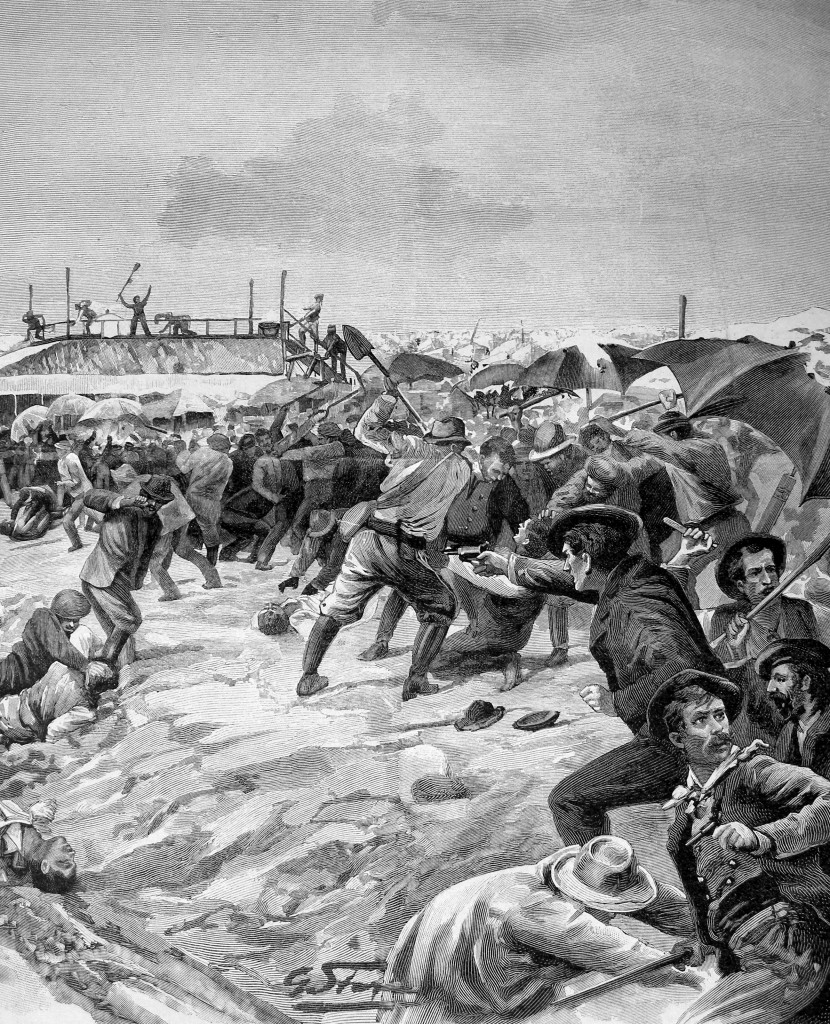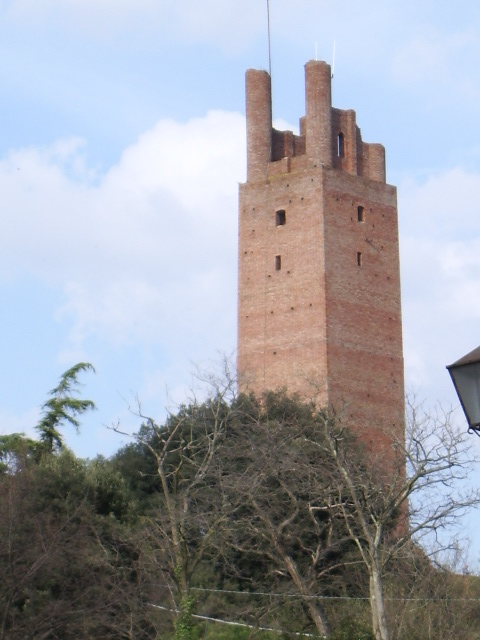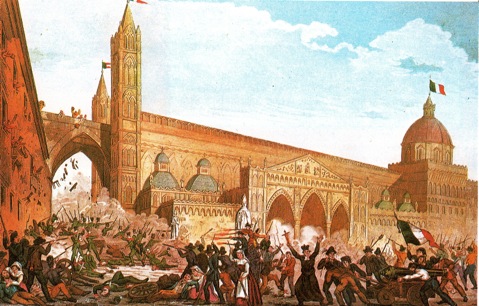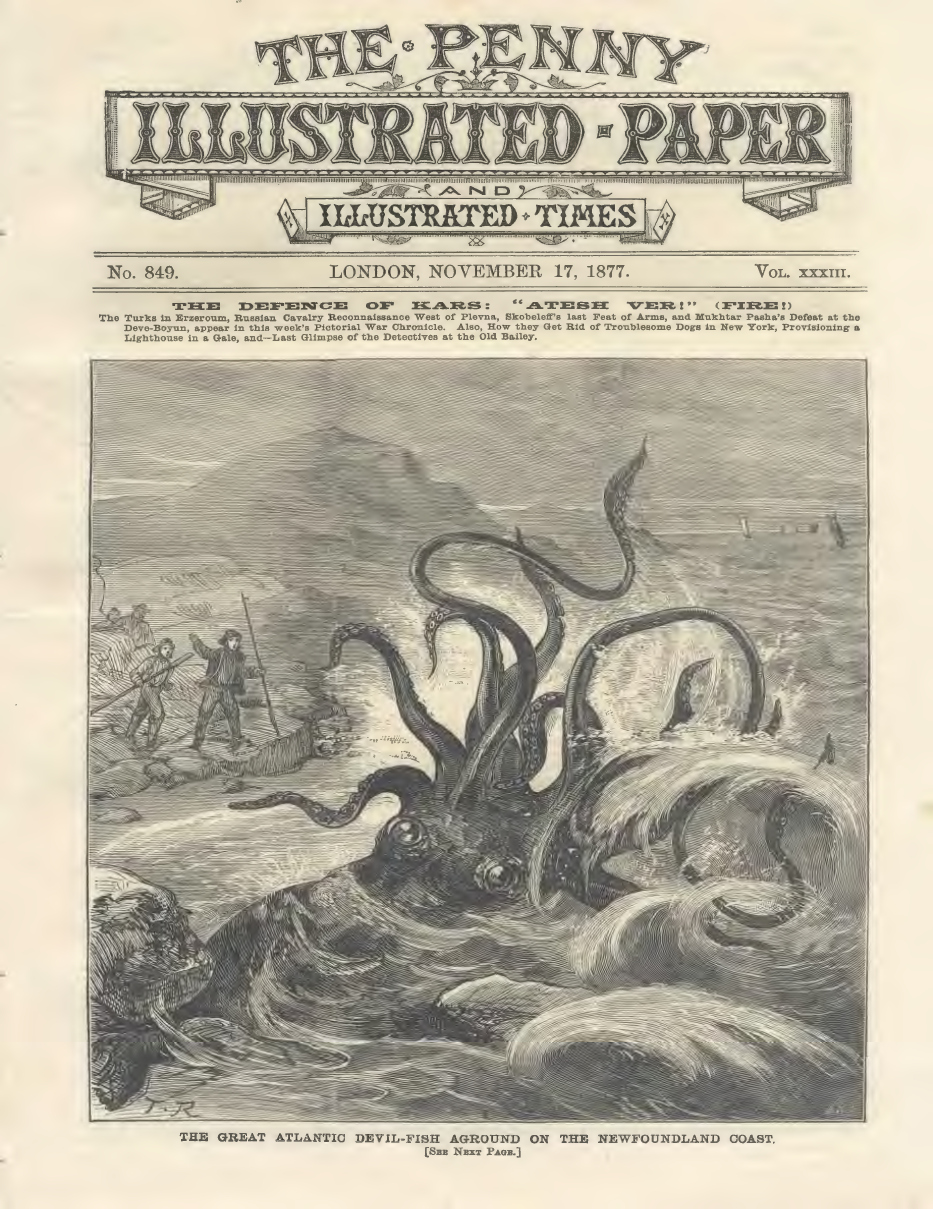|
Massacre Of Italians At Aigues-Mortes
The Massacre of the Italians at Aigues-Mortes was a series of events on 16 and 17 August 1893, in Aigues-Mortes, France, which resulted in the deaths of immigrant Italian workers of the ''Compagnie des Salins du Midi'', at the hands of French villagers and blue-collar worker, labourers. Estimates range from the official number of eight deaths up to 150, according to the Italian press of the time. Those killed were victims of lynchings, beatings with clubs, drowning and rifle shot. There were also many non-fatal injuries. The massacre was not the first attack by French workers on poor Italian immigrant labourers that were prepared to work at cut-rate wages.Seton-Watson, ''Italy from liberalism to fascism'', pp. 161-62 When the news reached Italy anti-French riots erupted in the country. The case was also one of the greatest legal scandals of the time, since no convictions were ever made. Description of the events In the summer of 1893, the ''Compagnie des Salins du Midi'' beg ... [...More Info...] [...Related Items...] OR: [Wikipedia] [Google] [Baidu] |
Aigues-Mortes
Aigues-Mortes (; ) is a Communes of France, commune in the Gard Departments of France, department in the Occitania (administrative region), Occitania region of southern France. The medieval Ramparts of Aigues-Mortes, city walls surrounding the city are well preserved. Situated on the junction of the Canal du Rhône à Sète and the Chenal Maritime to Le Grau-du-Roi, the town is a transit center for canal craft and Dutch barges. Name The name "Aigues-Mortes" was attested in 1248 in the Latinized form ', which means "dead water", or "stagnant water". The name comes from the marshes and ponds that surround the village (which has never had drinking water, potable water). The inhabitants of the commune are known as ''Aigues-Mortais'' or ''Aigues-Mortaises'' in French. The Occitan language, Occitan ' is equivalent to toponymic types in the Morteau Langues d'oïl, Oil dialect cf. Morteau, Morteau (Doubs): ''mortua Aqua'' (1105, VTF521) and Cirey-lès-Mareilles, Morteaue (Haute-M ... [...More Info...] [...Related Items...] OR: [Wikipedia] [Google] [Baidu] |
San Miniato
San Miniato is a town and ''comune'' in the province of Pisa, in the region of Tuscany, Italy. San Miniato sits at a historically strategic location atop three small hills where it dominates the lower Arno valley, between the valleys of the Egola and Elsa rivers. It used to carry the additional sobriquet al Tedesco ("to the German") to distinguish it from the convent of San Miniato al Monte in Florence, which is about to the northeast. History In medieval times, San Miniato was on the via Francigena, which was the main connecting route between northern Europe and Rome. It also sits at the intersection of the Florence-Pisa and the Lucca-Siena roads. Over the centuries, San Miniato was therefore exposed to a constant flow of friendly and hostile armies, traders in all manner of goods and services, and other travellers from near and far. Archaeological evidence indicates that the site of the town and the surrounding area has been settled since at least the Paleolithic era. It ... [...More Info...] [...Related Items...] OR: [Wikipedia] [Google] [Baidu] |
Francesco Crispi
Francesco Crispi (4 October 1818 – 11 August 1901) was an Italian patriot and statesman. He was among the main protagonists of the Risorgimento, a close friend and supporter of Giuseppe Mazzini and Giuseppe Garibaldi, and one of the architects of Italian unification in 1860.Nation-building in 19th-century Italy: the case of Francesco Crispi Christopher Duggan, History Today, 1 February 2002 Crispi served as for six years, from 1887 to 1891, and again from 1893 to 1896, and was the first prime minister from |
Il Messaggero
''Il Messaggero'' (English: "The Messenger") is an Italian Newspaper#Daily, daily newspaper based in Rome, Italy. It has been in circulation since 1878. It is one of the main national newspapers in Italy. History and profile ''Il Messaggero'' was founded in December 1878. On 1 January 1879, the first issue of ''Il Messaggero'' was published, under the management of Luigi Cesana. The paper aimed at being the newspaper of newspapers and at providing its readers with all opinions and all events. The first four copies of the paper were delivered as free samples to the subscribers of the newspaper, ''Il Fanfulla''. One of the early Editor-in-chief, editors-in-chief of ''Il Messaggero'' was Alberto Cianca,who resigned from the post due to political reasons. Since its inception, ''Il Messaggero'' has been owned by different companies. One of the former owners is Montedison through the Ferruzzi Group. In 1996 the paper was acquired by Francesco Gaetano Caltagirone. He founded the Calta ... [...More Info...] [...Related Items...] OR: [Wikipedia] [Google] [Baidu] |
Saint-Laurent-du-Pont
Saint-Laurent-du-Pont () is a commune in the Isère department in southeastern France. In 1970 it was the location of the Club Cinq-Sept fire, in which 146 people died. Population Economy There is a large cement works at Saint-Laurent-du-Pont, unusually inside a national park. Twin towns — sister cities Saint-Laurent-du-Pont is twinned with: * Herdorf, Germany (1984) * Berbenno, Italy (1985) See also *Communes of the Isère department The following is a list of the 512 communes in the French department of Isère. The communes cooperate in the following intercommunalities (as of 2025):Communes of Isère ... [...More Info...] [...Related Items...] OR: [Wikipedia] [Google] [Baidu] |
Angoulême
Angoulême (; Poitevin-Saintongeais: ''Engoulaeme''; ) is a small city in the southwestern French Departments of France, department of Charente, of which it is the Prefectures of France, prefecture. Located on a plateau overlooking a meander of the river Charente (river), Charente, the city is nicknamed the "balcony of the southwest". The city proper's population is a little less than 42,000 but it is the centre of an urban area of 110,000 people extending more than from east to west. Formerly the capital of Angoumois during the Ancien Régime, Angoulême was a fortified town for a long time, and was highly coveted due to its position at the centre of many roads important to communication, so therefore it suffered many sieges. From its tumultuous past, the city, perched on a rocky spur, inherited a large historical, religious, and urban heritage which attracts a lot of tourists. Nowadays, Angoulême is at the centre of an agglomeration, which is one of the most industrialised ... [...More Info...] [...Related Items...] OR: [Wikipedia] [Google] [Baidu] |
The Times
''The Times'' is a British Newspaper#Daily, daily Newspaper#National, national newspaper based in London. It began in 1785 under the title ''The Daily Universal Register'', adopting its modern name on 1 January 1788. ''The Times'' and its sister paper ''The Sunday Times'' (founded in 1821), are published by Times Media, since 1981 a subsidiary of News UK, in turn wholly owned by News Corp. ''The Times'' and ''The Sunday Times'' were founded independently and have had common ownership only since 1966. It is considered a newspaper of record in the UK. ''The Times'' was the first newspaper to bear that name, inspiring numerous other papers around the world. In countries where these other titles are popular, the newspaper is often referred to as or , although the newspaper is of national scope and distribution. ''The Times'' had an average daily circulation of 365,880 in March 2020; in the same period, ''The Sunday Times'' had an average weekly circulation of 647,622. The two ... [...More Info...] [...Related Items...] OR: [Wikipedia] [Google] [Baidu] |
Penny Illustrated Paper
The ''Penny Illustrated Paper and Illustrated Times'' was a cheap ( 1d.) illustrated London weekly newspaper that ran from 1861 to 1913. Premises Illustrated weekly newspapers had been pioneered by the ''Illustrated London News ''The Illustrated London News'', founded by Herbert Ingram and first published on Saturday 14 May 1842, was the world's first illustrated weekly news magazine. The magazine was published weekly for most of its existence, switched to a less freq ...'' (published from 1842, costing fivepence): its imitators included the '' Pictorial Times'' (1843–48), and – after the 1855 repeal of the Stamp Act – the '' Illustrated Times''. With the abolition of paper duty in 1861 it was possible to envisage an even cheaper mass-circulation illustrated weekly. History The first issue, 12 October 1861, announced itself confidently under the masthead "PENNY ILLUSTRATED PAPER: With All the News of the Week": "A new era opens upon the people. In producing a ... [...More Info...] [...Related Items...] OR: [Wikipedia] [Google] [Baidu] |
The Graphic
''The Graphic'' was a British weekly illustrated newspaper, first published on 4 December 1869 by William Luson Thomas's company, Illustrated Newspapers Ltd with Thomas's brother, Lewis Samuel Thomas, as a co-founder. The Graphic was set up as a rival to the popular ''Illustrated London News''. In addition to its home market, the paper had subscribers all around the British Empire and North America. ''The Graphic'' sought to bring awareness to prevailing issues in the British empire such as poverty, homelessness, and public health. The newspaper aimed to cover home news and news from around the Empire, and devoted much attention to literature, arts, sciences, the fashionable world, sport, music and opera. Royal occasions, national celebrations, and ceremonies were also given prominent coverage. The newspaper used its illustrations to capture authentic scenes throughout London and had an immense influence on the art world with many admirers including Vincent van Gogh and Hubert ... [...More Info...] [...Related Items...] OR: [Wikipedia] [Google] [Baidu] |
New York Times
''The New York Times'' (''NYT'') is an American daily newspaper based in New York City. ''The New York Times'' covers domestic, national, and international news, and publishes opinion pieces, investigative reports, and reviews. As one of the longest-running newspapers in the United States, the ''Times'' serves as one of the country's Newspaper of record, newspapers of record. , ''The New York Times'' had 9.13 million total and 8.83 million online subscribers, both by significant margins the List of newspapers in the United States, highest numbers for any newspaper in the United States; the total also included 296,330 print subscribers, making the ''Times'' the second-largest newspaper by print circulation in the United States, following ''The Wall Street Journal'', also based in New York City. ''The New York Times'' is published by the New York Times Company; since 1896, the company has been chaired by the Ochs-Sulzberger family, whose current chairman and the paper's publ ... [...More Info...] [...Related Items...] OR: [Wikipedia] [Google] [Baidu] |
Le Temps (Paris)
(, ''The Times'') was one of Paris's most important daily newspapers from 25 April 1861 to 30 November 1942. It was a serious paper of record. Founded in 1861 by Edmund Chojecki (writing under the pen name "Charles Edmond") and Auguste Nefftzer, was under Nefftzer's direction for ten years, when took his place, and for nearly 45 years directed the newspaper with an iron hand until his death in 1914. He was succeeded by his sons Émile (1914), and Adrien Jr. (1925) and by Louis Mills (1929). Soon after Mills's death in 1931, became a public limited company. Adrien Hébrard and his successors left substantial freedom to the editorial room and the newspaper had the reputation of keeping its journalists for a long time. always remained moderate politically. The early issues of the newspaper reflected Nefftzer's liberal philosophy and had considerable trouble achieving readership. He frequently had to turn to friends in Alsace who were able to help support financially. Eventua ... [...More Info...] [...Related Items...] OR: [Wikipedia] [Google] [Baidu] |
Palazzo Farnese
Palazzo Farnese () or Farnese Palace is one of the most important High Renaissance palaces in Rome. Owned by the Italian Republic, it was given to the French government in 1936 for a period of 99 years, and currently serves as the French embassy in Italy. First designed in 1517 for the Farnese family, the building expanded in size and conception when Alessandro Farnese became Pope Paul III in 1534, to designs by Antonio da Sangallo the Younger. Its building history involved some of the most prominent Italian architects of the 16th century, including Michelangelo, Jacopo Barozzi da Vignola and Giacomo della Porta. At the end of the 16th century, the important fresco cycle of ''The Loves of the Gods'' in the Farnese Gallery was carried out by the Bolognese painter Annibale Carracci, marking the beginning of two divergent trends in painting during the 17th century, the Roman High Baroque and Classicism. The famous Farnese sculpture collection, now in the National Archeo ... [...More Info...] [...Related Items...] OR: [Wikipedia] [Google] [Baidu] |






